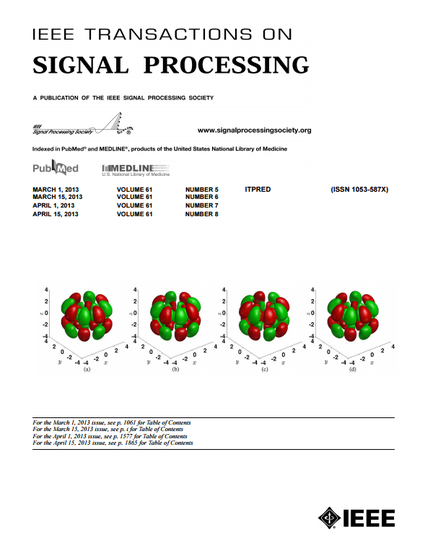
Article
Localization in Wireless Sensor Networks: Byzantines and Mitigation Techniques
IEEE Transactions on Signal Processing
(2013)
Abstract
Wireless Sensor Networks (WSNs) are vulnerable to Byzantine attacks in which malicious sensors send falsified information to the Fusion Center (FC) with the goal of degrading inference performance. In this paper, we consider Byzantine attacks for the location estimation task in WSNs using binary quantized data. Posterior Cramér-Rao Lower Bound (PCRLB) is used to characterize the performance of the network. Two kinds of attack strategies are considered: Independent and Collaborative attacks. We determine the fraction of Byzantine attackers in the network that make the FC incapable of utilizing sensor information to estimate the target location. Optimal attacking strategies for given attacking resources are also derived. Furthermore, we propose two schemes for the mitigation of Byzantine attacks. The first scheme is based on a Byzantine Identification method under the assumption of identical local quantizers. We show with simulations that the proposed scheme identifies most of the Byzantines. In order to improve the performance, we propose a second scheme in conjunction with our identification scheme where dynamic non-identical threshold quantizers are used at the sensors. We show that it not only reduces the location estimation error but also makes the Byzantines `ineffective' in their attack strategy.
Keywords
- Byzantine attacks,
- malicious sensors,
- posterior Cramér-Rao lower bound,
- target localization,
- wireless sensor networks
Disciplines
Publication Date
March 15, 2013
DOI
10.1109/TSP.2012.2236325
Citation Information
Aditya Vempaty, Onur Ozdemir, Keshav Agrawal, Hao Chen, et al.. "Localization in Wireless Sensor Networks: Byzantines and Mitigation Techniques" IEEE Transactions on Signal Processing Vol. 61 Iss. 6 (2013) p. 1495 - 1508 ISSN: 1053587X Available at: http://works.bepress.com/hao_chen/22/
